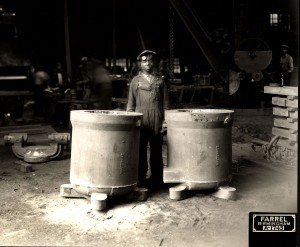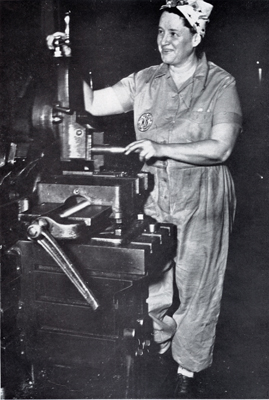This exhibit shows scenes of Connecticut’s workers doing Hard Work. Capital H, Capital W. The kind of work where you surely need the brains but if you ain’t got the brawn it’s not gonna happen. And we’ve got plenty of photographs in our business collections showing the men and women in the state in various depictions of work where some of the main job requirements are muscle and sweat. I’m sure tears were there somewhere but the photographs don’t really show that.
In the late 19th and early 20th century — a time period in America known for big industry — Connecticut was one of the major players, producing brass, iron, steel, tools, textiles and more for the state, the country, and the world. These products didn’t just happen. It took a workforce of thousands, many of them new immigrants who flocked to Connecticut for these types of jobs, to produce, to make, to build, and to work.






